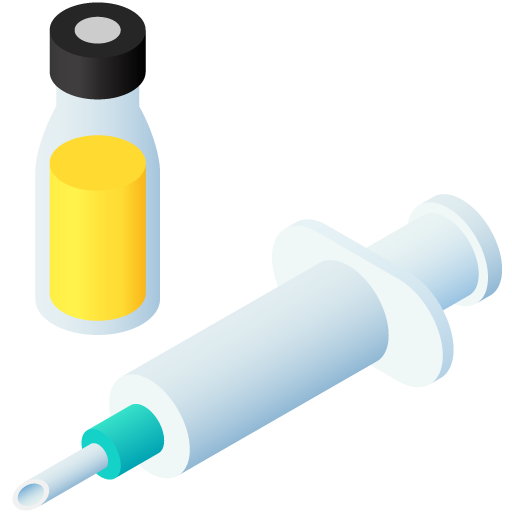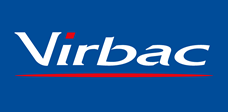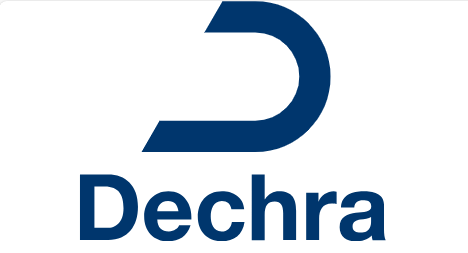Combination therapy
No results were found for your selected species
Vectormune ND
Active substance
ATC code
Species
Chickens and embryonated chicken eggs.
Indications
For active immunisation of 18-day-old embryonated chicken eggs or one-day-old chicks to reduce mortality and clinical signs caused by Newcastle disease virus and to reduce mortality, clinical signs and lesions caused by virulent Marek’s disease virus.
Onset of immunity against Newcastle disease for broilers and layers: 3 weeks of age.
Duration of immunity against Newcastle disease for broilers: 9 weeks of age.
Duration of immunity against Newcastle disease for layers: 18 weeks of age
Onset of immunity against Marek’s disease for broilers and layers: 1 week of age.
Duration of immunity for broilers and layers: A single vaccination is sufficient to provide protection during the risk period of infection with Marek’s disease virus.
Dose to be administered and administration route
For in ovo administration and subcutaneous use.
In ovo administration:
One single dose of 0.05 ml is injected into each 18-day-old embryonated broiler chicken egg. For in ovo application an automatic in ovo egg injector can be used. In ovo equipment should be calibrated to ensure that a 0.05 ml dose is applied to each egg.
|
Vaccine ampoule presentation (No. of vaccine ampoules multiplied by doses needed) |
Solvent presentation (ml) |
Volume of one dose (ml) |
|
2 x 2,000 |
200 |
0.05 |
|
1 x 4,000 |
200 |
0.05 |
|
2 x 4,000 |
400 |
0.05 |
|
4 x 4,000 |
800 |
0.05 |
|
5 x 4,000 |
1000 |
0.05 |
|
6 x 4,000 |
1200 |
0.05 |
|
8 x 4,000 |
1600 |
0.05 |
The speed of automatic injection is at least 2,500 eggs per hour, therefore solvent presentation of at least or more than 400 ml is recommended to prime and inject for longer than 10 minutes. In ovo equipment should be calibrated to ensure that a 0.05 ml dose is applied to each egg.
Solvent presentations smaller than 400 ml are not recommended to be used for in ovo application by an automated machine as it may not be enough to prime the machine and to inject for longer than 10 minutes. The 200 ml presentation may be used for manual vaccination.
Subcutaneous use:
One single injection of 0.2 ml per chick is applied for broilers or layers at one day of age. The vaccine may be injected by an automatic syringe.
|
Vaccine ampoule presentation (No. of vaccine ampoules multiplied by doses needed) |
Solvent presentation (ml) |
Volume of one dose (ml) |
|
1 x 1,000 |
200 |
0.20 |
|
1 x 2,000 |
400 |
0.20 |
|
2 x 2,000 |
800 |
0.20 |
|
1 x 4,000 |
800 |
0.20 |
|
4,000 + 1,000 |
1000 |
0.20 |
|
3 x 2,000 |
1200 |
0.20 |
|
2 x 4,000 |
1600 |
0.20 |
The usual aseptic precautions should be applied to all administration procedures.
Be familiar with all safety and precautionary measures for handling liquid nitrogen in order to prevent personal injury.
Preparation of vaccine suspension for injection:
1. After matching the dose size of the vaccine ampoule presentation with the solvent bag size, quickly remove the exact number of ampoules needed from the liquid nitrogen container.
2. Draw up 2 ml of solvent into a 5 ml syringe.
3. Thaw rapidly the contents of the ampoules by gentle agitation in water at 27–39 °C.
4. As soon as they are completely thawed, open ampoules holding them at arm’s length in order to prevent any risk of injury should the ampoule break.
5. Once the ampoule is open, slowly draw up the content into the 5 ml sterile syringe already containing 2 ml of solvent with a needle of at least 18-gauge diameter.
6. Transfer the suspension into the solvent bag. The diluted vaccine prepared as described is mixed by gentle agitation.
7. Withdraw a portion of the diluted vaccine into the syringe to rinse the ampoule. Remove the washing from the ampoule and inject it gently into the solvent bag. Repeat one or two times.
8. The diluted vaccine prepared as described is mixed by gentle agitation so as to be ready for use.
Repeat the operations in point 2 to 7 for the appropriate number of ampoules to be thawed. Use the vaccine immediately, slowly mix regularly to ensure uniform suspension of cells and use within a period not exceeding 2 hours.
After adding the content of the ampoule to the solvent, the ready to use product is a clear, red coloured suspension for injection.
Discard any ampoules that have been accidentally thawed.
Do not re-freeze under any circumstances.
Do not re-use opened containers of diluted vaccine.
Adverse reactions
None known.
Reporting adverse events is important. It allows continuous safety monitoring of a veterinary medicinal product. Reports should be sent, preferably via a veterinarian, to either the marketing authorisation holder or the national competent authority via the national reporting system. See the package leaflet for respective contact details.
Dispensing
POM-V - Prescription Only Medicine – VeterinarianANNEX I SUMMARY OF PRODUCT CHARACTERISTICS
1. NAME OF THE VETERINARY MEDICINAL PRODUCT
Vectormune ND suspension and solvent for suspension for injection for chickens
2. QUALITATIVE AND QUANTITATIVE COMPOSITION
Each dose of reconstituted vaccine (0.05 ml in-ovo administration or 0.2 ml subcutaneous use) contains:
Active substance:
Cell-associated live recombinant turkey herpes virus (rHVT/ND) expressing the fusion protein of
Newcastle disease virus D-26 lentogenic strain: 2,500 – 8,000 PFU*
* PFU: plaque forming units.
For the full list of excipients, see section 6.1.
3. PHARMACEUTICAL FORM
Suspension and solvent for suspension for injection.
Orange-yellowish semi-transparent frozen suspension.
The solvent is a clear red solution.
4. CLINICAL PARTICULARS
4.1 Target species
Chickens and embryonated chicken eggs
4.2 Indications for use, specifying the target species
For active immunisation of 18-day-old embryonated chicken eggs or one-day-old chicks to reduce mortality and clinical signs caused by Newcastle disease virus and to reduce mortality, clinical signs and lesions caused by virulent Marek’s disease virus.
Onset of immunity against Newcastle disease for broilers and layers: 3 weeks of age.
Duration of immunity against Newcastle disease for broilers: 9 weeks of age.
Duration of immunity against Newcastle disease for layers: 18 weeks of age
Onset of immunity against Marek’s disease for broilers and layers: 1 week of age.
Duration of immunity for broilers and layers: A single vaccination is sufficient to provide protection during the risk period of infection with Marek’s disease virus.
4.3 Contraindications
None.
4.4 Special warnings for each target species
Vaccinate healthy animals only.
4.5 Special precautions for use
Special precautions for use in animals
The vaccine strain was shown to be excreted by chickens and there was a slow spread to turkeys which was not detectable at 35 days but was detectable after 42 days of a contact study. Safety trials show the excreted vaccine strain is not harmful in turkeys; however, special precautions should be taken to avoid spreading of the vaccine strain to turkeys.
No spread was demonstrated between chickens.
It should be ensured that the vaccine suspension is mixed regularly in a gentle way during the vaccination session to guarantee that the vaccine suspension remains homogenous and that the correct vaccine virus titre is administered (e.g. when automatic in-ovo injection machines are used or during long vaccination sessions).
Special precautions to be taken by the person administering the veterinary medicinal product to animals
Liquid nitrogen containers and vaccine ampoules should be handled by properly trained personnel only.
Personal protective equipment consisting of protective gloves, spectacles and boots should be worn when handling the veterinary medicinal product, before withdrawing from liquid nitrogen, during the ampoule thawing and opening operations.
Frozen glass ampoules may explode during sudden temperature changes. Store and use liquid nitrogen only in a dry and well-ventilated place. Inhalation of the liquid nitrogen is dangerous.
Personnel involved in the treatment of vaccinated birds should follow hygiene principles and take particular care in handling litter from vaccinated chickens.
4.6 Adverse reactions (frequency and seriousness)
None known.
4.7 Use during pregnancy, lactation or lay
Laying birds:
Do not use in birds in lay and within 4 weeks before the start of the laying period.
4.8 Interaction with other medicinal products and other forms of interaction
Safety and efficacy data are available which demonstrate that this vaccine can be mixed and administered with Cevac Transmune by in ovo or subcutaneous vaccination. The mixed products protect against Newcastle disease virus, virulent Marek’s disease virus and very virulent avian Infectious Bursal Disease (IBD) viruses. The safety and efficacy of the mixed vaccines are not different from those described for the vaccines administered separately. Read also the product information of Cevac Transmune before use.
In-ovo administration:
One single dose of 0.05 ml is injected into each 18-day-old embryonated broiler chicken egg. Match the dose size of the vaccines and the sterile solvent according to the table below.
|
Vectormune ND |
Cevac Transmune |
Sterile solvent |
|
2 x 2,000 doses |
2 x 2,000 doses |
200 ml |
|
1 x 4,000 doses |
1 x 4,000 doses |
200 ml |
|
2 x 4,000 doses |
2 x 4,000 doses |
400 ml |
|
4 x 4,000 doses |
4 x 4,000 doses |
800 ml |
|
5 x 4,000 doses |
5 x 4,000 doses |
1000 ml |
|
6 x 4,000 doses |
6 x 4,000 doses |
1200 ml |
|
8 x 4,000 doses |
8 x 4,000 doses |
1600 ml |
Subcutaneous use:
One single injection of 0.2 ml per chick is applied for broilers at one day of age.
Match the dose size of the vaccines and the sterile solvent according to the table below.
|
Vectormune ND |
Cevac Transmune |
Sterile solvent |
|
2 x 1,000 doses |
1 x 2,000 doses |
400 ml |
|
1 x 2,000 doses |
1 x 2,000 doses |
400 ml |
|
2 x 2,000 doses |
2 x 2,000 doses |
800 ml |
|
1 x 4,000 doses |
1 x 4,000 doses |
800 ml |
|
4,000 + 1,000 doses |
4,000 + 1,000 doses |
1000 ml |
|
3 x 2,000 doses |
3 x 2,000 doses |
1200 ml |
|
2 x 4,000 doses |
2 x 4,000 doses |
1600 ml |
Draw up 2 ml of sterile solvent into a 5 ml syringe then draw up the thawed content of Vectormune ND ampoule in it.
Draw up 2 ml of sterile solvent into another 5 ml syringe then dissolve the content of Cevac Transmune vial in it.
Transfer the dissolved vaccines into the solvent bag and mix by gentle agitation.
Safety and efficacy data are available which demonstrate that this vaccine can be mixed and administered with Cevac MD Rispens by subcutaneous application. Read also the product information of Cevac MD Rispens before use.
Overview table for recommended dilution possibilities of different presentations in case of associated use:
|
No. of ampoules x doses (D) |
Solvent presentation (ml) |
Volume of one dose (ml) |
|
|
Cevac MD Rispens |
Vectormune ND |
||
|
1 x 1,000 D |
1 x 1,000 D |
200 |
0.20 |
|
1 x 2,000 D |
1 x 2,000 D |
400 |
|
|
2 x 2,000 D |
2 x 2,000 D |
800 |
|
|
1 x 4,000 D |
1 x 4,000 D |
800 |
|
|
4000 + 1000 D |
4000 + 1000 D |
1000 |
|
|
3 x 2000 D |
3 x 2000 D |
1200 |
|
|
2 x 4000 D |
2 x 4000 D |
1600 |
|
No information is available on the safety and efficacy of this vaccine when used with any other veterinary medicinal product, except Cevac Transmune and Cevac MD Rispens (where it is marketed). A decision to use this vaccine before or after any other veterinary medicinal product therefore needs to be made on a case by case basis.
4.9 Amounts to be administered and administration route
For in-ovo administration and subcutaneous use.
In-ovo administration:
One single dose of 0.05 ml is injected into each 18-day-old embryonated broiler chicken egg. For inovo application an automatic in-ovo egg injector can be used. In-ovo equipment should be calibrated to ensure that a 0.05 ml dose is applied to each egg.
Subcutaneous use:
One single injection of 0.2 ml per chick is applied for broilers or layers at one day of age. The vaccine may be injected by an automatic syringe.
Overview table for dilution possibilities of different presentations:
For in-ovo administration:
|
Vaccine ampoule presentation (No. of vaccine ampoules multiplied by doses needed) |
Solvent presentation (ml) |
Volume of one dose (ml) |
|
2 x 2,000 |
200 |
0.05 |
|
1 x 4,000 |
200 |
0.05 |
|
2 x 4,000 |
400 |
0.05 |
|
4 x 4,000 |
800 |
0.05 |
|
5 x 4,000 |
1000 |
0.05 |
|
6 x 4,000 |
1200 |
0.05 |
|
8 x 4,000 |
1600 |
0.05 |
The speed of automatic injection is at least 2,500 eggs per hour, therefore solvent presentation of at least or more than 400 ml is recommended to prime and inject for longer than 10 minutes. In-ovo equipment should be calibrated to ensure that a 0.05 ml dose is applied to each egg.
Solvent presentations smaller than 400 ml are not recommended to be used for in-ovo application by an automated machine as it may not be enough to prime the machine and to inject for longer than 10 minutes. The 200 ml presentation may be used for manual vaccination.
For subcutaneous use:
|
Vaccine ampoule presentation (No. of vaccine ampoules multiplied by doses needed) |
Solvent presentation (ml) |
Volume of one dose (ml) |
|
1 x 1,000 |
200 |
0.20 |
|
1 x 2,000 |
400 |
0.20 |
|
2 x 2,000 |
800 |
0.20 |
|
1 x 4,000 |
800 |
0.20 |
|
4,000 + 1,000 |
1000 |
0.20 |
|
3 x 2,000 |
1200 |
0.20 |
|
2 x 4,000 |
1600 |
0.20 |
The usual aseptic precautions should be applied to all administration procedures.
Be familiar with all safety and precautionary measures for handling liquid nitrogen in order to prevent personal injury.
Preparation of vaccine suspension for injection:
1. After matching the dose size of the vaccine ampoule presentation with the solvent bag size, quickly remove the exact number of ampoules needed from the liquid nitrogen container.
2. Draw up 2 ml of solvent into a 5 ml syringe.
3. Thaw rapidly the contents of the ampoules by gentle agitation in water at 27–39 °C.
4. As soon as they are completely thawed, open ampoules holding them at arm’s length in order to prevent any risk of injury should the ampoule break.
5. Once the ampoule is open, slowly draw up the content into the 5 ml sterile syringe already containing 2 ml of solvent with a needle of at least 18 gauge diameter.
6. Transfer the suspension into the solvent bag. The diluted vaccine prepared as described is mixed by gentle agitation.
7. Withdraw a portion of the diluted vaccine into the syringe to rinse the ampoule. Remove the washing from the ampoule and inject it gently into the solvent bag. Repeat one or two times.
8. The diluted vaccine prepared as described is mixed by gentle agitation so as to be ready for use.
Repeat the operations in point 2 to 7 for the appropriate number of ampoules to be thawed. Use the vaccine immediately, slowly mix regularly to ensure uniform suspension of cells and use within a period not exceeding 2 hours.
After adding the content of the ampoule to the solvent, the ready to use product is a clear, red coloured suspension for injection.
Discard any ampoules that have been accidentally thawed.
Do not re-freeze under any circumstances.
Do not re-use opened containers of diluted vaccine.
4.10 Overdose (symptoms, emergency procedures, antidotes), if necessary
No symptoms were observed after the administration of a 10-fold dose of vaccine.
4.11 Withdrawal period(s) Zero days.
5. IMMUNOLOGICAL PROPERTIES
Pharmacotherapeutic group: Immunologicals for Aves, live viral vaccines for domestic fowls. ATCvet code: QI01AD.
The efficacy of the vaccine was proven by challenges with the virulent Marek’s disease virus strain MD70 and with the NDV strain Herts 33/56.
6. PHARMACEUTICAL PARTICULARS
6.1 List of excipients
Suspension:
Eagle’s minimum essential medium L-glutamine
Sodium bicarbonate
HEPES
Bovine serum
Dimethyl sulfoxide Water for injection
Solvent:
Sucrose
Casein hydrolysate
Sorbitol
Dipotassium hydrogen phosphate
Potassium dihydrogen phosphate
Phenol red
Water for injection
6.2 Major incompatibilities
Do not mix with any other veterinary medicinal product, except Cevac Transmune and Cevac MD Rispens (where it is marketed) and the solvent (Cevac Solvent Poultry) supplied for use with the veterinary medicinal product.
6.3 Shelf life
Shelf life of the veterinary medicinal product as packaged for sale:
Suspension: 3 years
Solvent: 30 months
Shelf life after reconstitution according to directions: 2 hours.
6.4. Special precautions for storage
Suspension:
Store and transport frozen in liquid nitrogen (-196 °C).
The liquid nitrogen containers must be checked regularly for liquid nitrogen level and must be refilled as needed.
Solvent:
Store below 25 °C.
Do not freeze.
6.5 Nature and composition of immediate packaging
Suspension:
One type I glass ampoule containing 1,000, 2,000 or 4,000 doses of the vaccine. Ampoules are put on cane, supplied with a tag showing the dose.
The canes with ampoules are stored in a liquid nitrogen container.
Solvent:
Polyvinylchloride bag containing 200 ml, 400 ml, 800 ml, 1000 ml, 1200 ml or 1600 ml in individual over-pouch.
Not all pack sizes may be marketed.
6.6 Special precautions for the disposal of unused veterinary medicinal product or waste materials derived from the use of such products
Any unused veterinary medicinal product or waste materials derived from such veterinary medicinal product should be disposed of in accordance with local requirements.
7. MARKETING AUTHORISATION HOLDER
CEVA-Phylaxia Co. Ltd.
1107 Budapest Szállás u. 5.
HUNGARY
8. MARKETING AUTHORISATION NUMBER(S)
EU/2/15/188/004-006
9. DATE OF FIRST AUTHORISATION/RENEWAL OF THE AUTHORISATION
Date of first authorisation: 08/09/2015
Date of last renewal: 20/07/2020
10 DATE OF REVISION OF THE TEXT
{MM/YYYY}
Detailed information on this veterinary medicinal product is available on the website of the European Medicines Agency (http://www.ema.europa.eu/).
PROHIBITION OF SALE, SUPPLY AND/OR USE
Any person intending to manufacture, import, possess, sell, supply and use this veterinary medicinal product must first consult the relevant Member State’s competent authority on the current vaccination policies, as these activities may be prohibited in a Member State on the whole or part of its territory pursuant to national legislation.
ANNEX II
A. MANUFACTURER OF THE BIOLOGICAL ACTIVE SUBSTANCE AND MANUFACTURER RESPONSIBLE FOR BATCH RELEASE
B. CONDITIONS OR RESTRICTIONS REGARDING SUPPLY AND USE
C. STATEMENT OF THE MRLs
A. MANUFACTURER OF THE BIOLOGICAL ACTIVE SUBSTANCE AND MANUFACTURER RESPONSIBLE FOR BATCH RELEASE
Name and address of the manufacturer of the biological active substance
CEVA-Phylaxia Co. Ltd.
1107 Budapest
Szállás u. 5.
HUNGARY
Name and address of the manufacturer responsible for batch release
CEVA-Phylaxia Co. Ltd.
1107 Budapest Szállás u. 5.
HUNGARY
B. CONDITIONS OR RESTRICTIONS REGARDING SUPPLY AND USE
Veterinary medicinal product subject to prescription.
According to Article 71 of Directive 2001/82/EC of the European Parliament and of the Council as amended, a Member State may, in accordance with its national legislation, prohibit the manufacture, import, possession, sale, supply and/or use of immunological veterinary medicinal products on the whole or part of its territory if it is established that:
a) the administration of the product to animals will interfere with the implementation of a national programme for the diagnosis, control or eradication of animal diseases, or will cause difficulties in certifying the absence of contamination in live animals or in foodstuffs or other products obtained from treated animals.
b) the disease to which the product is intended to confer immunity is largely absent from the territory in question.
Official control authority batch release is required for this product.
C. STATEMENT OF THE MRLs
The active substance being a principle of biological origin intended to produce active immunity is not within the scope of Regulation (EC) No 470/2009.
The excipients (including adjuvants) listed in section 6.1 of the SPC are considered as not falling within the scope of Regulation (EC) No 470/2009 when used as in this veterinary medicinal product.
ANNEX III
LABELLING AND PACKAGE LEAFLET
A. LABELLING
MINIMUM PARTICULARS TO APPEAR ON SMALL IMMEDIATE PACKAGING UNITS
Ampoules of 1,000, 2,000 or 4,000 doses
|
1. |
NAME OF THE VETERINARY MEDICINAL PRODUCT |
Vectormune ND
|
2. |
QUANTITY OF THE ACTIVE SUBSTANCE(S) |
rHVT/ND
|
3. |
CONTENTS BY WEIGHT, BY VOLUME OR BY NUMBER OF DOSES |
1,000 doses
2,000 doses
4,000 doses
|
4. |
ROUTE(S) OF ADMINISTRATION |
SC or in-ovo use.
|
5. |
WITHDRAWAL PERIOD(S) |
|
6. |
BATCH NUMBER |
Lot {number}
|
7. |
EXPIRY DATE |
EXP {month/year}
|
8. |
THE WORDS “FOR ANIMAL TREATMENT ONLY” |
For animal treatment only.
CEVA-Phylaxia Co. Ltd.
1107 Budapest Szállás u. 5.
Hungary
PARTICULARS TO APPEAR ON THE IMMEDIATE OR OUTER PACKAGES
Solvent bags of 200 ml, 400 ml, 800 ml, 1000 ml, 1200 ml or 1600 ml
|
1. |
NAME OF THE VETERINARY MEDICINAL PRODUCT |
Cevac Solvent Poultry
|
2. |
STATEMENT OF ACTIVE SUBSTANCES |
|
3. |
PHARMACEUTICAL FORM |
|
4. |
PACKAGE SIZE |
200 ml
400 ml
800 ml
![]() 1000 ml
1000 ml
1200 ml
1600 ml
|
5. |
TARGET SPECIES |
|
6. |
INDICATION(S) |
|
7. |
METHOD AND ROUTE(S) OF ADMINISTRATION |
Read the package leaflet before use.
|
8. |
WITHDRAWAL PERIOD(S) |
|
9. |
SPECIAL WARNING(S), IF NECESSARY |
Read the package leaflet before use.
|
10. |
EXPIRY DATE |
EXP {month/year}
|
11. |
SPECIAL STORAGE CONDITIONS |
Store below 25 °C.
Do not freeze.
|
12. |
SPECIAL PRECAUTIONS FOR THE DISPOSAL OF UNUSED PRODUCTS OR WASTE MATERIALS, IF ANY |
|
13. |
THE WORDS “FOR ANIMAL TREATMENT ONLY” AND CONDITIONS OR RESTRICTIONS REGARDING SUPPLY AND USE, IF APPLICABLE |
For animal treatment only.
|
14. |
THE WORDS “KEEP OUT OF THE SIGHT AND REACH OF CHILDREN” |
|
15. |
NAME AND ADDRESS OF THE MARKETING AUTHORISATION HOLDER |
Company logo
or
CEVA-Phylaxia Co. Ltd.
1107 Budapest Szállás u. 5.
Hungary
|
16. |
MARKETING AUTHORISATION NUMBER(S) |
|
17. |
MANUFACTURER’S BATCH NUMBER |
Lot {number}
B. PACKAGE LEAFLET
PACKAGE LEAFLET:
Vectormune ND suspension and solvent for suspension for injection for chickens
1. NAME AND ADDRESS OF THE MARKETING AUTHORISATION HOLDER AND OF
THE MANUFACTURING AUTHORISATION HOLDER RESPONSIBLE FOR BATCH
RELEASE, IF DIFFERENT
Marketing authorisation holder and manufacturer responsible for batch release:
CEVA-Phylaxia Co. Ltd.
1107 Budapest Szállás u. 5.
HUNGARY
2. NAME OF THE VETERINARY MEDICINAL PRODUCT
Vectormune ND suspension and solvent for suspension for injection for chickens
3. STATEMENT OF THE ACTIVE SUBSTANCE(S) AND OTHER INGREDIENT(S)
Cell-associated live recombinant viral turkey herpes virus (rHVT/ND) expressing the fusion protein of Newcastle disease virus D-26 lentogenic strain: 2,500–8,000 PFU*/dose
* PFU: plaque forming units
Orange-yellowish semi-transparent frozen suspension.
The solvent is a clear red solution.
4. INDICATION(S)
For active immunisation of 18-day-old embryonated chicken eggs or one-day-old chicks to reduce mortality and clinical signs caused by Newcastle disease virus and to reduce mortality, clinical signs and lesions caused by virulent Marek’s disease virus.
Onset of immunity against Newcastle disease for broilers and layers: 3 weeks of age.
Duration of immunity against Newcastle disease for broilers: 9 weeks of age. Duration of immunity against Newcastle disease for layers: 18 weeks of age.
Onset of immunity against Marek’s disease for broilers and layers: 1 week of age.
Duration of immunity for broilers and layers: A single vaccination is sufficient to provide protection during the risk period of infection with Marek’s disease virus.
5. CONTRAINDICATIONS
None.
6. ADVERSE REACTIONS
None known.
If you notice any side effects, even those not already listed in this package leaflet or you think that the medicine has not worked, please inform your veterinary surgeon.
7. TARGET SPECIES
Chickens and embryonated chicken eggs.
8. DOSAGE FOR EACH SPECIES, ROUTE(S) AND METHOD OF ADMINISTRATION
In-ovo administration:
One single injection of 0.05 ml is applied to each 18-day-old embryonated broiler chicken egg. For inovo application an automatic in-ovo egg injector can be used.
Subcutaneous use:
One single injection of 0.2 ml per chick is applied for broilers or layers at one day of age. The vaccine may be applied by an automatic syringe.
Overview table for dilution possibilities of different presentations:
For in-ovo administration:
|
Vaccine ampoule presentation (No. of vaccine ampoules multiplied by doses needed) |
Solvent presentation (ml) |
Volume of one dose (ml) |
|
2 x 2,000 |
200 |
0.05 |
|
1 x 4,000 |
200 |
0.05 |
|
2 x 4,000 |
400 |
0.05 |
|
4 x 4,000 |
800 |
0.05 |
|
5 x 4,000 |
1000 |
0.05 |
|
6 x 4,000 |
1200 |
0.05 |
|
8 x 4,000 |
1600 |
0.05 |
The speed of automatic injection is at least 2,500 eggs per hour, therefore solvent presentation of at least or more than 400 ml is recommended to prime and inject for longer than 10 minutes. In-ovo equipment should be calibrated to ensure that a 0.05 ml dose is applied to each egg.
Solvent presentation smaller than 400 ml is not recommended to be used for in-ovo application as it may not be enough to prime the machine and to inject longer than 10 minutes. The 200 ml presentation may be used for manual vaccination.
For subcutaneous use:
|
Vaccine ampoule presentation (No. of vaccine ampoules multiplied by doses needed) |
Solvent presentation (ml) |
Volume of one dose (ml) |
|
1 x 1,000 |
200 |
0.20 |
|
1 x 2,000 |
400 |
0.20 |
|
2 x 2,000 |
800 |
0.20 |
|
1 x 4,000 |
800 |
0.20 |
|
4,000 + 1,000 |
1000 |
0.20 |
|
3 x 2,000 |
1200 |
0.20 |
|
2 x 4,000 |
1600 |
0.20 |
9. ADVICE ON CORRECT ADMINISTRATION
The usual aseptic precautions should be applied to all administration methods.
Be familiar with all safety and precautionary measures for handling liquid nitrogen in order to prevent personal injury.
Procedure for preparing vaccine suspension:
1. After matching the dose size of the vaccine ampoule presentation with the solvent bag size, quickly remove the exact number of ampoules needed from the liquid nitrogen container.
2. Draw up 2 ml of solvent into a 5 ml syringe.
3. Thaw rapidly the contents of the ampoules by gentle agitation in water at 27–39 °C.
4. As soon as they are completely thawed, open ampoules holding them at arm’s length in order to prevent any risk of injury should the ampoule break.
5. Once the ampoule is open, slowly draw up the content into the 5 ml sterile syringe already containing 2 ml solvent with a needle of at least 18 gauge diameter.
6. Transfer the suspension into the solvent bag. The diluted vaccine prepared as described is mixed by gentle agitation.
7. Withdraw a portion of the diluted vaccine into the syringe to rinse ampoule. Remove the washing from the ampoule and inject it gently into the solvent bag. Repeat it one or two times.
8. The diluted vaccine prepared as described is mixed by gentle agitation so as to be ready for use.
Repeat the operations in point 2 to 7 for the appropriate number of ampoules to be thawed. Use the vaccine immediately, slowly mix regularly to ensure uniform suspension of cells and use within a period not exceeding 2 hours. It should be ensured that the vaccine suspension is mixed regularly in a gentle way during the vaccination session to guarantee that the vaccine suspension remains homogeneous and that the correct vaccine virus titre is administered (e.g. when automatic inovo injection machines are used or during long vaccination sessions).
After adding the content of the ampoule to the solvent, the ready to use product is a clear, red coloured suspension for injection.
Do not use Vectormune ND if you notice visible signs of unacceptable decolourisation in the vials.
Discard any ampoules that have been accidentally thawed.
Do not re-freeze under any circumstances.
Do not re-use opened containers of diluted vaccine.
10. WITHDRAWAL PERIOD(S)
Zero days.
11. SPECIAL STORAGE PRECAUTIONS
Keep out of the sight and reach of children.
Suspension:
Store and transport frozen in liquid nitrogen (-196 °C).
The liquid nitrogen containers must be checked regularly for liquid nitrogen level and must be refilled as needed.
Solvent:
Store below 25 °C.
Do not freeze.
Do not use this veterinary medicinal product after the expiry date which is stated on the label. The expiry date refers to the last day of that month.
Shelf life after reconstitution according to directions: 2 hours.
12. SPECIAL WARNING(S)
Special warnings for each target species:
Vaccinate healthy animals only.
Special precautions for use in animals:
Vaccinated chicks may excrete the vaccine strain. There was a slow spread to turkeys which was not detectable at 35 days but was detectable after 42 days of a contact study. Special precautions should be taken to avoid spreading of the vaccine strain to turkeys.
No spread was demonstrated between chickens.
Special precautions to be taken by the person administering the veterinary medicinal product to animals:
Liquid nitrogen containers and vaccine ampoules should be handled only by properly trained personnel.
Personal protective equipment consisting of protective gloves, spectacles and boots should be worn when handling the veterinary medicinal product, before withdrawing from liquid nitrogen, during the ampoule thawing and opening operations.
Frozen glass ampoules may explode during sudden temperature changes. Store and use liquid nitrogen only in a dry and well-ventilated place. Inhalation of the liquid nitrogen is dangerous.
Personnel involved in the treatment of vaccinated birds should follow hygiene principles and take particular care in handling litter from vaccinated chickens.
Laying birds:
Do not use in birds in lay and within 4 weeks before the start of the laying period.
Interaction with other medicinal products and other forms of interaction:
Safety and efficacy data are available which demonstrate that this vaccine can be mixed and administered with Cevac Transmune by in ovo or subcutaneous vaccination for broilers. The mixed products protect against Newcastle disease virus, virulent Marek’s disease virus and very virulent avian Infectious Bursal Disease (IBD) viruses. The safety and efficacy of the mixed vaccines are not different from those described for the vaccines administered separately. Read also the product information of Cevac Transmune before use.
In-ovo administration:
One single dose of 0.05 ml is injected into each 18-day-old embryonated broiler chicken egg. Match the dose size of the vaccines and the sterile solvent according to the table below.
|
Vectormune ND |
Cevac Transmune |
Sterile solvent |
|
2 x 2,000 doses |
2 x 2,000 doses |
200 ml |
|
1 x 4,000 doses |
1 x 4,000 doses |
200 ml |
|
2 x 4,000 doses |
2 x 4,000 doses |
400 ml |
|
4 x 4,000 doses |
4 x 4,000 doses |
800 ml |
|
5 x 4,000 doses |
5 x 4,000 doses |
1000 ml |
|
6 x 4,000 doses |
6 x 4,000 doses |
1200 ml |
|
8 x 4,000 doses |
8 x 4,000 doses |
1600 ml |
Subcutaneous use:
One single injection of 0.2 ml per chick is applied for broilers at one day of age.
Match the dose size of the vaccines and the sterile solvent according to the table below.
|
Vectormune ND |
Cevac Transmune |
Sterile solvent |
|
2 x 1,000 doses |
1 x 2,000 doses |
400 ml |
|
1 x 2,000 doses |
1 x 2,000 doses |
400 ml |
|
2 x 2,000 doses |
2 x 2,000 doses |
800 ml |
|
1 x 4,000 doses |
1 x 4,000 doses |
800 ml |
|
4,000 + 1,000 doses |
4,000 + 1,000 doses |
1000 ml |
|
3 x 2,000 doses |
3 x 2,000 doses |
1200 ml |
|
2 x 4,000 doses |
2 x 4,000 doses |
1600 ml |
Draw up 2 ml of sterile solvent into a 5 ml syringe then draw up the thawed content of Vectormune ND ampoule in it.
Draw up 2 ml of sterile solvent into another 5 ml syringe then dissolve the content of Cevac Transmune vial in it.
Transfer the dissolved vaccines into the solvent bag and mix by gentle agitation.
Safety and efficacy data are available which demonstrate that this vaccine can be mixed and administered with Cevac MD Rispens by subcutaneous application. Read also the product information of Cevac MD Rispens before use.
Overview table for recommended dilution possibilities of different presentations in case of associated use:
|
No. of ampoules x doses (D) |
Solvent presentation (ml) |
Volume of one dose (ml) |
|
|
Cevac MD Rispens |
Vectormune ND |
||
|
1 x 1,000 D |
1 x 1,000 D |
200 |
0.20 |
|
1 x 2,000 D |
1 x 2,000 D |
400 |
|
|
2 x 2,000 D |
2 x 2,000 D |
800 |
|
|
1 x 4,000 D |
1 x 4,000 D |
800 |
|
|
4000 + 1000 D |
4000 + 1000 D |
1000 |
|
|
3 x 2000 D |
3 x 2000 D |
1200 |
|
|
2 x 4000 D |
2 x 4000 D |
1600 |
|
No information is available on the safety and efficacy of this immunological veterinary medicinal product when used with any other veterinary medicinal product, except Cevac Transmune and Cevac MD Rispens (where it is marketed). A decision to use this vaccine before or after any other veterinary medicinal product therefore needs to be made on a case by case basis.
Incompatibilities:
Do not mix with any other veterinary medicinal product, except Cevac Transmune and Cevac MD Rispens (where it is marketed) and the solvent (Cevac Solvent Poultry) supplied for use with the veterinary medicinal product.
13. SPECIAL PRECAUTIONS FOR THE DISPOSAL OF UNUSED PRODUCT OR WASTE MATERIALS, IF ANY
Ask your veterinary surgeon how to dispose of medicines no longer required. These measures should help to protect the environment.
14. DATE ON WHICH THE PACKAGE LEAFLET WAS LAST APPROVED
Detailed information on this veterinary medicinal product is available on the website of the European Medicines Agency (http://www.ema.europa.eu/).
15. OTHER INFORMATION
Marketing authorisation numbers: EU/2/15/188/004-006
One glass ampoule of 1,000; 2,000 or 4,000 doses of the vaccine. Ampoules are put on cane, supplied with a tag showing the dose.
The canes with ampoules are stored in a liquid nitrogen container.
Polyvinylchloride bag containing 200 ml of solvent in individual over-pouch.
Polyvinylchloride bag containing 400 ml of solvent in individual over-pouch.
Polyvinylchloride bag containing 800 ml of solvent in individual over-pouch.
Polyvinylchloride bag containing 1000 ml of solvent in individual over-pouch.
Polyvinylchloride bag containing 1200 ml of solvent in individual over-pouch. Polyvinylchloride bag containing 1600 ml of solvent in individual over-pouch.
Not all pack sizes may be marketed.

| Art. Nr. | 15052/5030 |
|---|---|
| EAN | 3411112958108 |
 TRUSTED SOURCE
TRUSTED SOURCE








